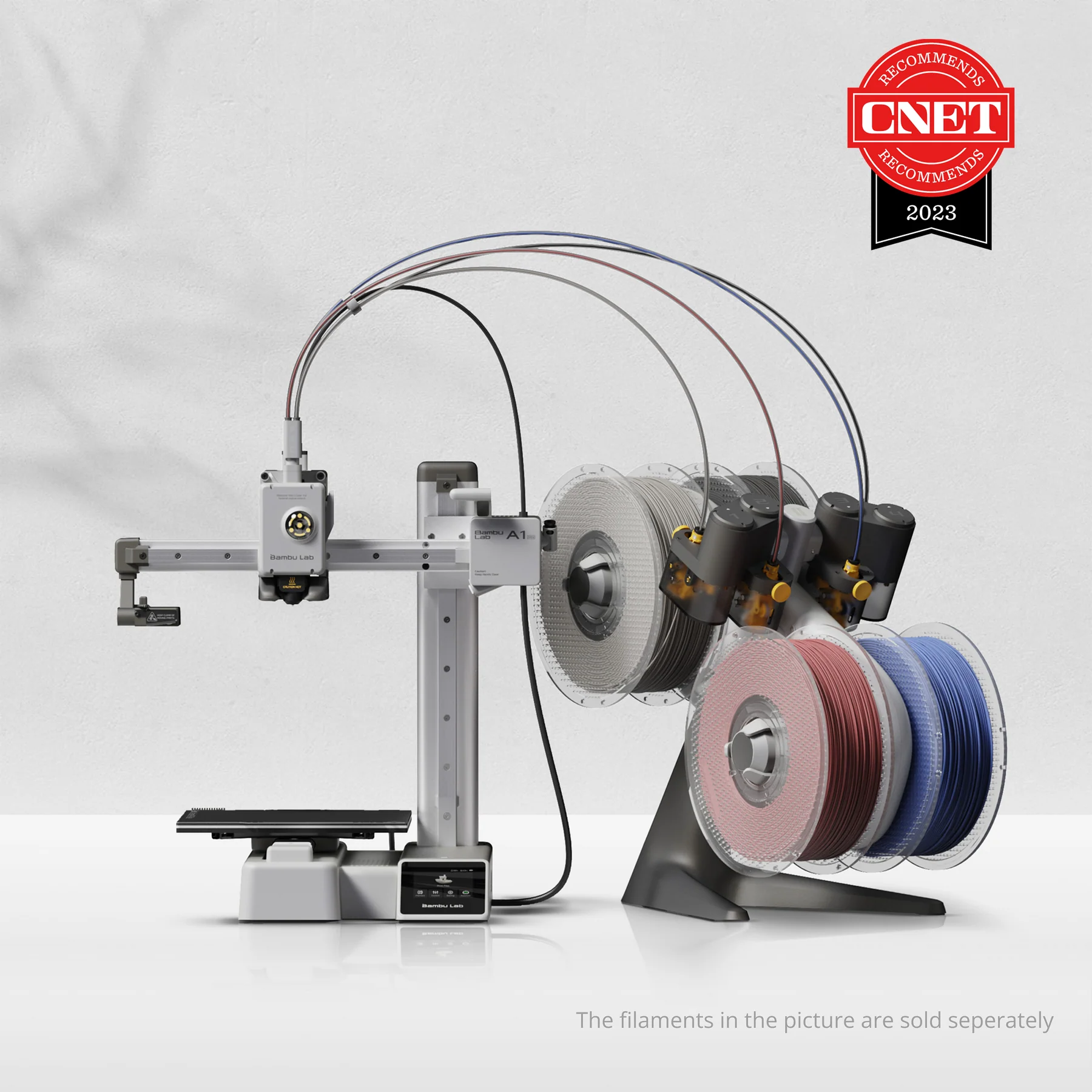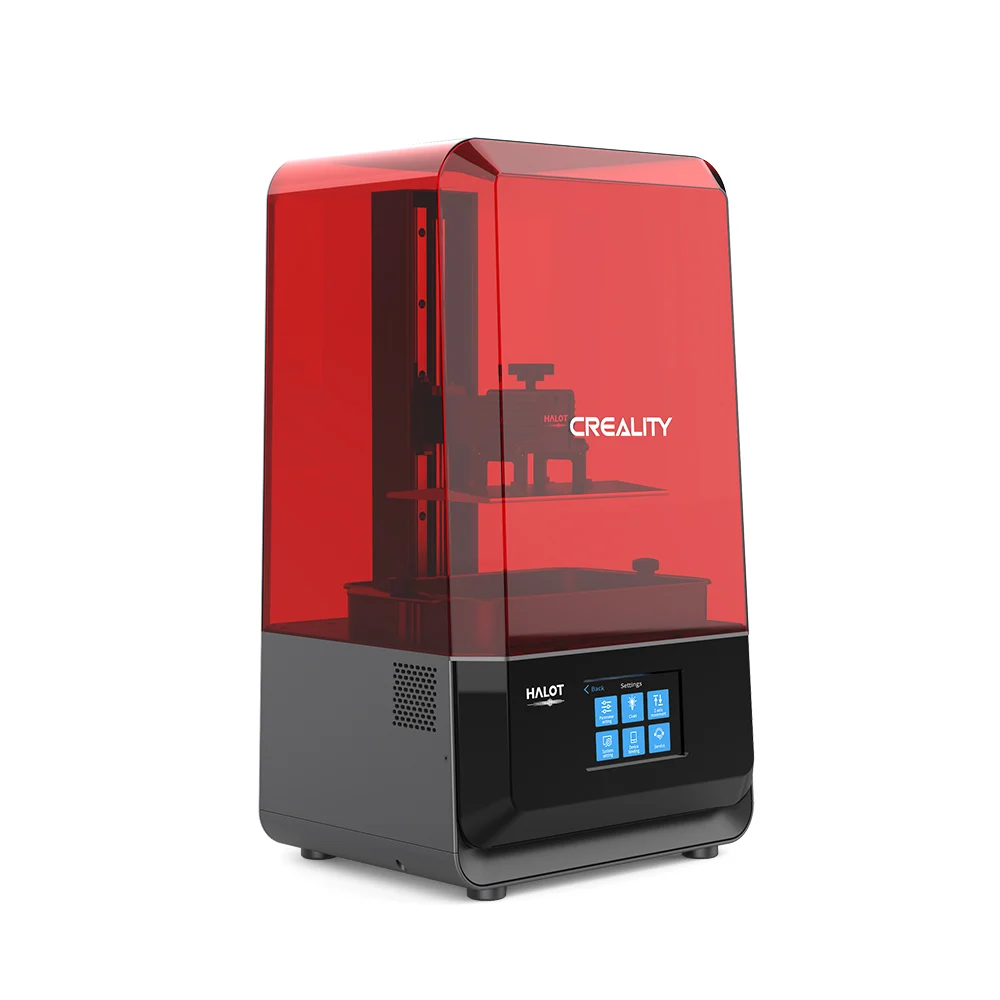Compare A1 Mini vs Halot Lite
Comparison between the best 3D printers
Choose the best 3D printer at the best price. The cheapest 3D printers are here.
Buy a 3D printer here with 3D Fila.
 |
 |
|
| Model | A1 Mini |
Halot Lite |
| Printing Material | Filament | Resin |
| Buy Filament for Bambu Lab A1 Mini | Buy Resin forCreality 3D Halot Lite | |
| Estimated price | $549,00 | $400,00 |
| Manufacturer | Bambu Lab | Creality 3D |
| Release Year | 2023 | 2021 |
| Print Volume [mm] | 180x180x180 | 192x120x200 |
| Printer Size [mm] | 315x347x365 | 330x301x572 |
| Weight [kg] | 5,5 | 10,6 |
| Power Loss Recovery | YES | NO |
| Maximum Resolution [mm] | 0,1 | 0,01 |
| Processor | 32-bit Silenciosa | |
| Display | Touchscreen 2,4'' | Display touchscreen 5'' |
| Power Supply | 150 W | |
| Connectivity | Wifi, Bambu bus, Cartão SD | SD / USB |
| Operating systems | Windows, Linux, Macbook | Windows, Mac, Linux |
| Date of registration in the system | 2024-04-10 | 2022-11-04 |
| Release date | 2023 | 2021 |
| Extra features | The Bambu Lab A1 Mini stands out not only for its impressive speed and automatic calibration, but also for its multi-color printing capability thanks to AMS Lite. This innovative system makes multi-color printing easy, making it accessible to everyone. AMS Lite, specific to the A1 Mini, supports up to four different materials simultaneously, providing creative freedom without complications. With comprehensive sensors for energy monitoring and recovery, a camera for timelapses and Wi-Fi control, the A1 Mini and AMS Lite together offer an intuitive and advanced 3D printing experience, ideal for materials such as PLA, PETG and TPU, and designed for simplicity and fast maintenance with quick-change nozzles. | Crealitys Halot Lite printer stands out in the mid-size resin 3D printing segment, with a build volume of 192 x 120 x 200 mm and 50 micron resolution. It offers a monochrome LCD for fast and durable printing, and an upgraded light source that ensures over 80% uniformity across the print bed. It includes Wi-Fi connectivity for remote control and updates, an ARM Cortex CPU for efficient performance, and is compatible with Halot Box and Lychee slicing software. It also has an activated carbon filter to reduce odors. |
| Support for multiple colors and materials (AMS and CFS) | YES | NO |
Notes * |
||
| Cost-benefit | 7 / 10 | 8 / 10 |
| Hardware | 4.2 / 10 | 1 / 10 |
| Tela | . | . |
| Print volume | 3 / 10 | 3 / 10 |
| Performance | 4 / 10 | 9 / 10 |
Conclusion |
| In comparing the Bambu Lab A1 Mini and the Creality 3D Halot Lite, it’s clear that each 3D printer excels in its specific area, catering to different user needs and preferences. The Bambu Lab A1 Mini, priced higher, offers advanced features such as impressive multi-color printing capabilities, power loss recovery, and a user-friendly interface with its touchscreen and Wi-Fi connectivity. This printer is ideal for users looking for versatility and fast, reliable performance, particularly in multi-material setups. Its automatic calibration and comprehensive sensor system further enhance its usability, making it well-suited for hobbyists and those aiming for high-quality PLA, PETG, and TPU prints. On the other hand, the Creality 3D Halot Lite, while more affordable, provides exceptional value with its monochrome LCD, allowing for higher resolution prints and improved durability. Its efficient ARM Cortex CPU and user-friendly slicing software compatibility make it accessible for users focused on mid-size resin printing. The Halot Lite also features effective odor reduction with its activated carbon filter, appealing to those concerned about the printing environment. In conclusion, selecting the best 3D printer ultimately depends on individual needs: if color versatility, speed, and advanced features are your priority, the Bambu Lab A1 Mini is a strong contender. However, for those focused on cost-effectiveness and high-quality resin printing with a robust feature set, the Creality 3D Halot Lite offers a compelling option. |

